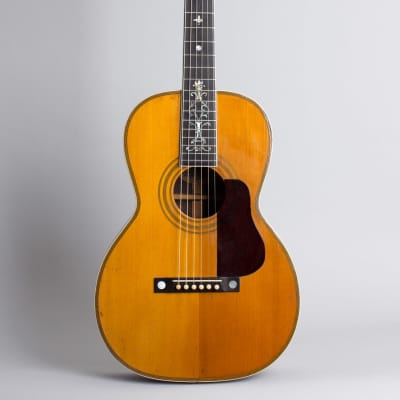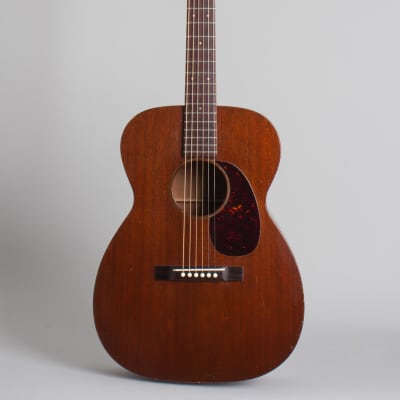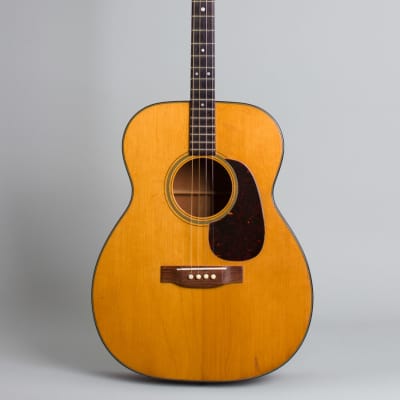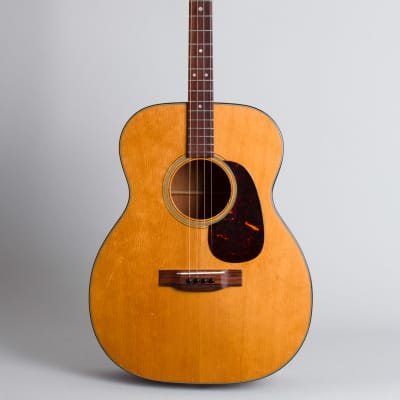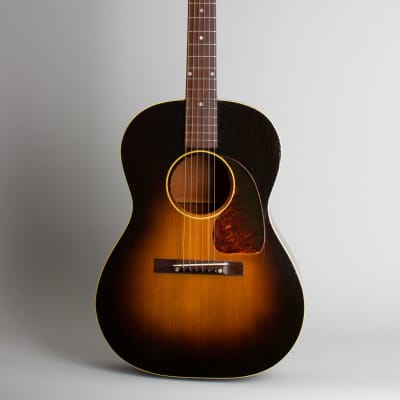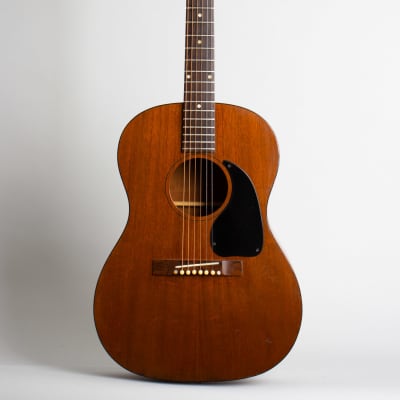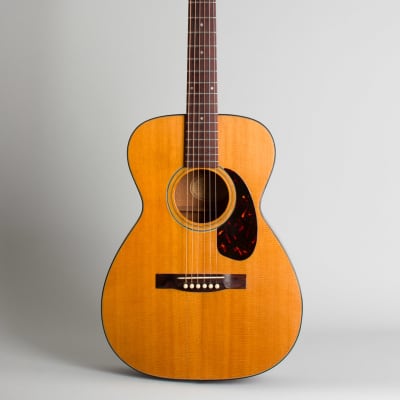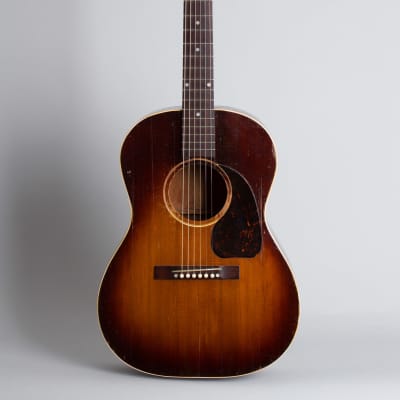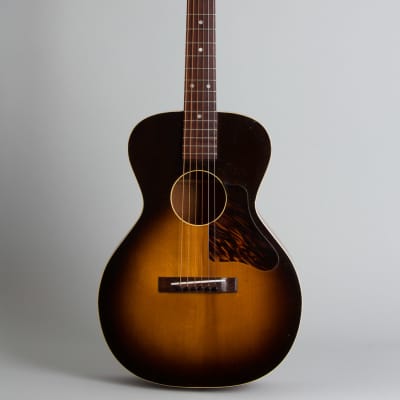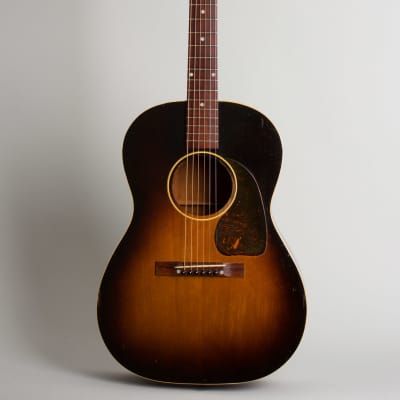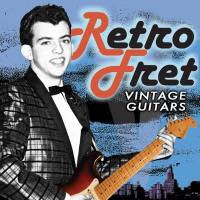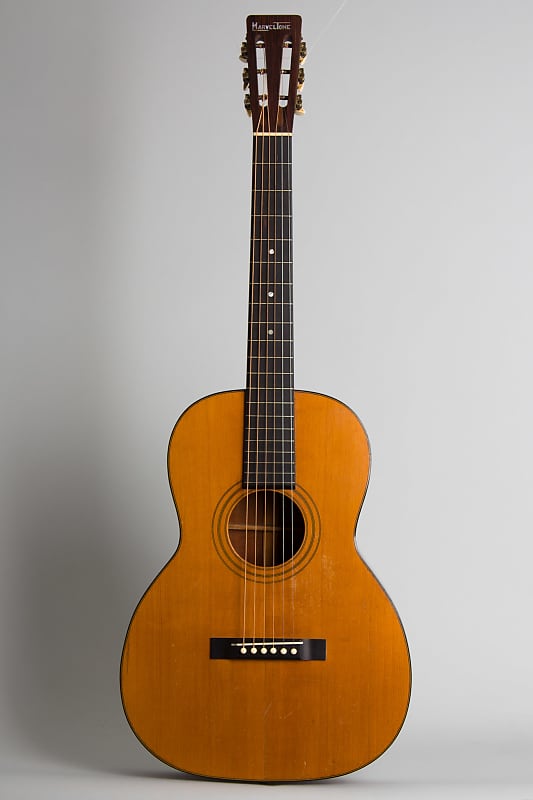

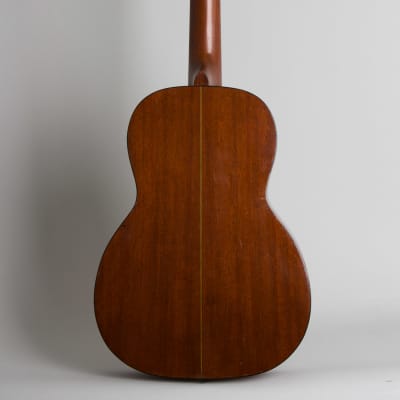
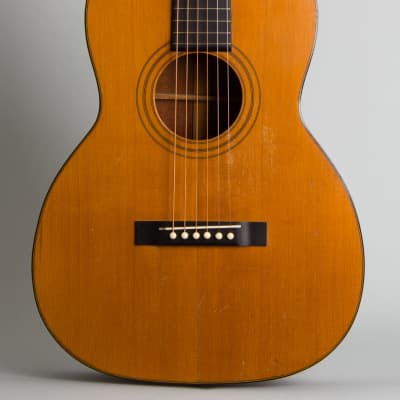
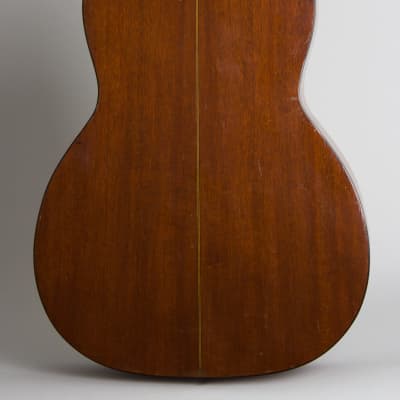
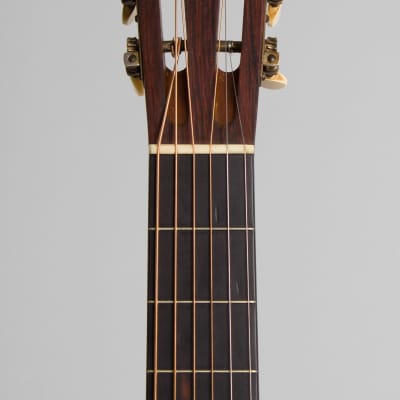
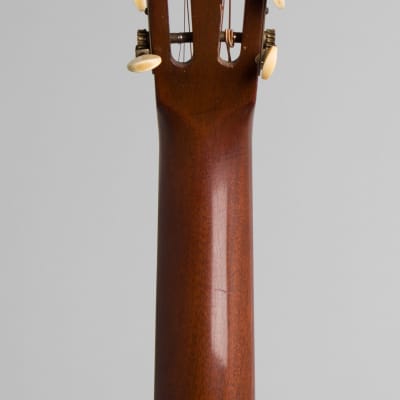
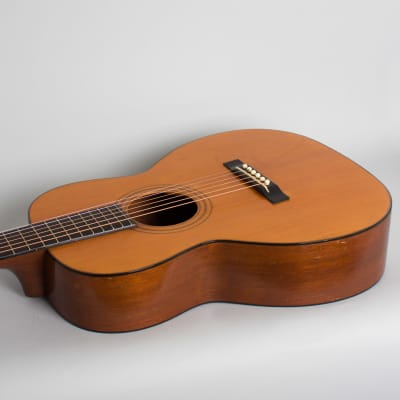
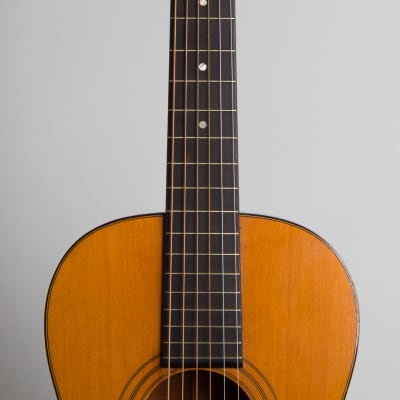
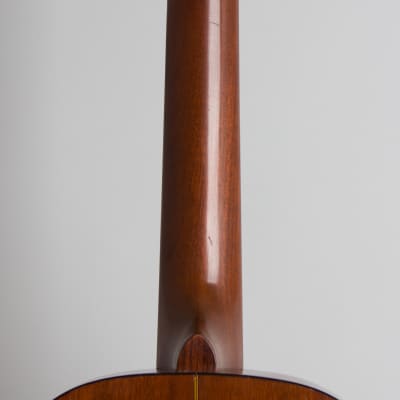
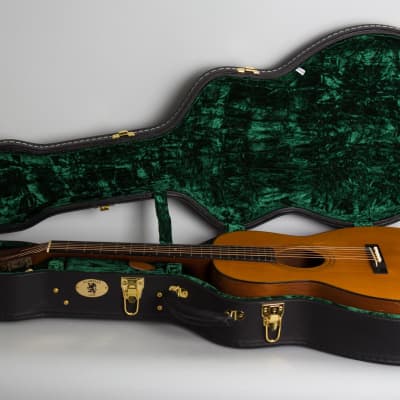
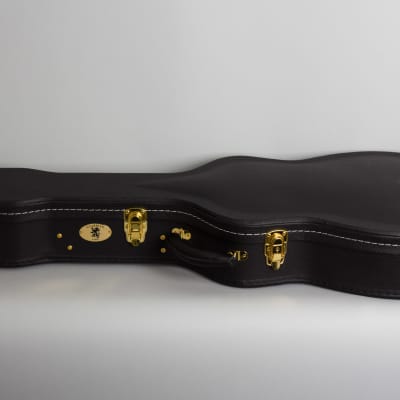
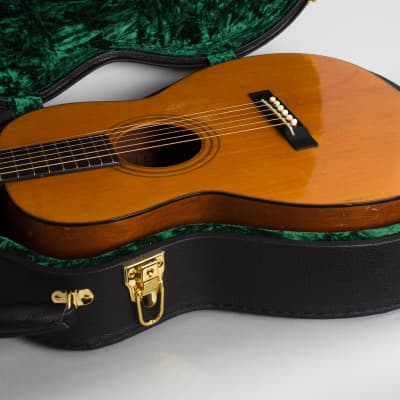
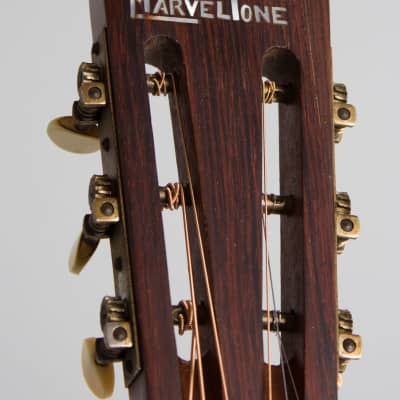
Regal MarvelTone Style #3 Model Flat Top Acoustic Guitar, c. 1930, made in Chicago, serial # 2094, natural lacquer finish, mahogany back and sides, spruce top; mahogany neck with ebony fingerboard, black chipboard case. This marvelous MarvelTone is a jobber-branded version of a guitar otherwise known as a Regal "Custom built", one of the best-kept secrets in pre-WWII flat tops, at least until recently. Most of these were sold as Regals, but the MarvelTone versions were a special version branded exclusively for Targ & Dinner, one of the many jobbers active at the time. Apart from the pearl logo inlaid on the headstock this model seems practically identical to the Regal-branded #3; this one has no Regal marks at all. Regal's "Custom Built" line was the Chicago company's direct challenge to Martin at the beginning of the depression, a time when guitar makers were scrambling for a very thin market. These begin to appear in catalogs in 1930-31, often advertised directly alongside Martins. They were very similar looking -- in print at least -- but the Regals were priced somewhat lower for the same level of materials, a savvy move as the country's economy collapsed. While this ploy did not seriously threaten Martin's dominance in high-end flattops it did result in some of the finest guitars to come out of Chicago in the 1930's.Regal simply copied Martin's basic guitar design closely, including the X-braced top, an extravagance most Chicago makers did not bother with. This Style 3 was the "popular priced" Grand concert model of the "Custom Built" line, a 14 1/2" wide guitar plain in ornamentation but well built of excellent materials, including "Genuine mahogany" neck, back and sides, ebony fingerboard and an X-braced Appalachian spruce top. While considered premium materials today this is simply what professional guitars were built with in 1930; the highest grades used Brazilian rosewood. The X bracing pattern under the top is closely copied from Martin's, if just a shade heavier and perhaps a bit less elegantly executed. The design conveniently enables this guitar to handle steel strings with aplomb. The top is 4-ply bound with a dark outer layer, the back single bound. The soundhole rings are plain inlaid circles. The neck is a round-backed profile a bit chunkier than the typical Martin, especially as it moves up towards the body. The tuners are the familiar budget-grade strips used on many period guitars. The "MarvelTone" pearl inlay in the headstock is engagingly sloppy, with several of the letters skewed noticeably from vertical.Regal listed their house-branded Style 3 at $28 retail, a decent sum at the time although a full $17 less than the similar Martin 00-18. Based on their rarity today even fewer of the MarvelTones seem to have been sold than Regals; all are rare today. Regal is mostly remembered for lower grade instruments but they were perfectly capable of building excellent guitars, as they also did for Bacon & Day. While not as delicately crafted as a Martin this is a great value in a pre-war steel-string guitar with an X braced top, with a fine sound all its own. "The Mark of Better Instruments" was Regal's slogan at the time, and in this case actually a pretty accurate assessment!Overall length is 38 in. (96.5 cm.), 14 1/2 in. (36.8 cm.) wide at lower bout, and 4 1/8 in. (10.5 cm.) in depth at side, taken at the end block. Scale length is 24 3/4 in. (629 mm.). Width of nut is 1 7/8 in. (48 mm.). This guitar has seen some play time but is in excellent playing condition overall, showing general wear overall and some well-executed repairs. There are dings, dents and scrapes to the original thin lacquer finish overall, most heavily pick or finger marks on the top below the string line. The turn of the lower bass bout has some heavy scraping on the side. The back has a number of dings and dents and some disturbances around the edges. The top has a number or well-repaired but plainly visible cracks, including several running back to the lower edge from the bridge and one long offset set on the lower treble bout near the edge. The center seam has been resealed along its entire length. Even with these repairs the top is very solid and the finish remains original with no overspray. There is one smaller grain crack to the beck, also neatly sealed up. The side has a smaller crack/punch repair at the turn of the lower treble bout, with a very small similar repair in the mirror location of the bass bout. There is a odd tiny patch on the turn of the upper bass bout, topically touched up. The original uncut ebony bridge has been reglued (at least once) and the neck reset, neatly done and structurally excellent. The original bridge plate has been patched neatly under the pin holes but is not heavier than it was originally. The original small frets have only light wear. This is a very fine playing guitar with a big punchy sound, about as good as a mahogany "non-Martin' from this era gets. Exc
Reverb Buyer Protection
Reverb has your back if your item is lost, damaged, or doesn't match its description. Simply report any issues within 7 days and we'll help you get a full refund.Learn more about Reverb Buyer Protection.
| Listed | 2 years ago |
| Condition | Excellent (Used) Excellent items are almost entirely free from blemishes and other visual defects and have been played or used with the utmost care.Learn more |
| Brand | |
| Model |
|
| Finish |
|
| Categories | |
| Year |
|
| Body Shape |
|
